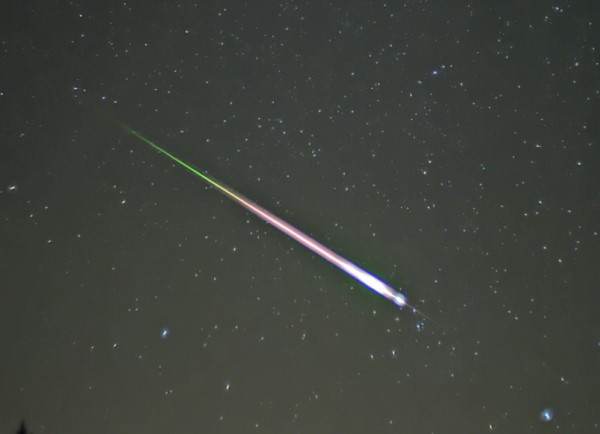From this coming Friday night to Saturday morning, Nov. 17-18, there’s going to be a fairly nice show happening in the sky. It’s the annual Leonid meteor shower, considered a moderate shower most years. This year’s conditions for viewing the Leonids should be wonderful because the moon will be out of the sky and won’t visually wash out any of the meteors or “shooting stars.”
If you’re not out there already, get out into the dark countryside where you may see 15 to 20 meteors an hour, or more. The Leonids are known to be surprising some years. Without moonlight, the sky will serve as a nice dark backdrop. Watching a meteor shower properly takes some discipline. You might see a few meteors in the early evening, but the bulk of the meteors will streak across the sky from midnight to just before the start of the morning twilight on the 18th. The best thing to do is go to bed early and set your alarm clock for just before midnight.
Most meteor showers are caused by the Earth running into a debris trail left behind by a comet. In the case of the Leonids, the parent comet is Tempel-Tuttle, which last visited this part of the solar system in 1998. Because of the Earth’s rotation after midnight, you’ll be facing into the direction of Earth’s orbit around the sun and the comet debris trail. A good analogy is driving on a warm summer evening. Isn’t that a pleasant thought right about now? You get many more bugs on the front windshield than on your rear window. You’re facing the “front windshield” after midnight.
It’s called the Leonid meteor shower because the meteors seem to originate from the constellation Leo the Lion, perched in the eastern sky after midnight. That doesn’t mean you should just look in that part of the sky, because if you do, you’ll miss a lot of meteors. They will be all over the celestial dome with their trails pointing back in the general direction of Leo. The best way to watch any meteor shower is to lie on a blanket, either on the ground or, if you’re like me, a reclining lawn chair. Roll your eyes all around the sky and count how many meteors you can catch. No binoculars or telescopes are needed. Meteor shower watching is especially fun with a group of people because the more eyes in the sky, the more meteors you’ll see. You give each other moral support for being out in the cold, but it’s a lot of fun!
Despite the bright streaks you see shooting across the heavens, the individual debris particles from comet Tempel-Tuttle are tiny. Most of them are much smaller than the size of your thumbnail. They slam into our atmosphere at speeds exceeding 40 miles per second. They burn up in our atmosphere 50 to 80 miles high because of air friction, but there’s no way we can see the actual combustion that high up. The streaks we see are caused by the columns of air becoming temporarily chemically excited by the meteoroids ripping through them.
Enjoy the Leonids! As good as they are, there will be an even better meteor shower next month. The Geminids will peak the night of Dec. 14-15.
Mike Lynch is an amateur astronomer and retired broadcast meteorologist for WCCO Radio in Minneapolis/St. Paul. He is the author of “Stars: a Month by Month Tour of the Constellations,” published by Adventure Publications and available at bookstores and adventurepublications.net. Mike is available for private star parties. You can contact him at mikewlynch@comcast.net.
Related Articles
Skywatch: Best constellation of autumn? A horse, of course
Skywatch: Chilling under the thrilling November sky
Skywatch: Get a stellar start to your day
Skywatch: The great autumn galactic happening


Leave a Reply